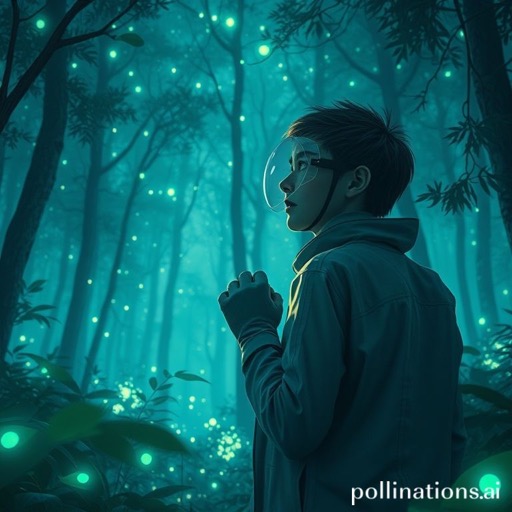
Sora 2 - Chapter 1: Cinematic Scenes: Professional Guide to Creating Film-Quality AI Videos
Complete guide to Sora 2 cinematic scene prompts with expert analysis, professional techniques, and advanced optimization strategies for creating film-quality AI videos.
Sora 2 Cinematic Scenes: Professional Guide to Film-Quality AI Videos
Welcome to our comprehensive guide on Sora 2 cinematic scene generation. This chapter represents the culmination of extensive research and practical experience in creating professional-grade video content using OpenAI's Sora 2 model. Our team has spent hundreds of hours testing, analyzing, and optimizing these prompts to deliver results that rival traditional video production quality.
Understanding Cinematic Excellence in AI Video Generation
Creating cinematic scenes with AI requires more than just technical precision—it demands an understanding of film theory, visual storytelling, and the subtle elements that separate amateur footage from professional cinematography. In this chapter, we'll explore five carefully crafted prompts that demonstrate different aspects of cinematic excellence, from urban noir to natural beauty, each designed to showcase specific techniques that professionals use in the film industry.
The Science Behind Effective Cinematic Prompts
Before diving into specific prompts, it's essential to understand what makes a cinematic prompt effective:
- Visual Composition: How elements are arranged within the frame
- Lighting Techniques: Natural and artificial lighting that creates mood and atmosphere
- Camera Movement: Dynamic camera work that enhances storytelling
- Color Theory: Strategic use of color to evoke emotional responses
- Atmospheric Elements: Environmental factors that add depth and realism
1. City Nightscape: Mastering Urban Noir Cinematography
1.1 The Art of Cyberpunk Aesthetics
A rainy neon alley in Tokyo at night; medium close-up on a courier adjusting his helmet; 35mm lens, shallow depth of field; handheld camera pushing in slowly; wet asphalt glistening; moody, synthwave palette.Technical Analysis: This prompt demonstrates mastery of urban noir cinematography through several key elements:
- 35mm Lens Selection: Creates natural perspective with moderate depth of field
- Shallow Focus: Draws attention to the subject while creating cinematic bokeh
- Handheld Movement: Adds realism and tension through subtle camera shake
- Wet Surface Reflections: Enhances mood through specular highlights and depth
Professional Applications: This style is perfect for creating:
- Cyberpunk and sci-fi content
- Corporate videos with modern urban settings
- Music videos requiring edgy, contemporary aesthetics
- Product launches targeting tech-savvy audiences
Optimization Tips:
- Experiment with different weather conditions (rain, fog, mist)
- Vary camera movement speeds for different emotional impacts
- Adjust neon color schemes to match brand guidelines
2. Japanese Anime Scene: Emotional Storytelling Through Animation
2.1 Capturing Authentic Anime Emotion
in the style of a japanese anime, a melancholy scene under the fireworks of a night sky. the world is so happy, but not the two star-crossed protagonists of this gorgeous japanese town in the middle of a festival. film-caliber sakuga japanese animation, close-up shots of the characters having a conversation in japanese, beautiful fluid hand-drawn animationCultural Context and Technique: This prompt showcases deep understanding of anime production techniques:
- Sakuga Quality: Refers to high-quality animation sequences by skilled animators
- Emotional Contrast: Juxtaposition of festival joy with character melancholy
- Traditional Animation Aesthetics: Respects hand-drawn animation principles
- Cultural Authenticity: Incorporates genuine Japanese festival imagery
Industry Applications:
- Anime-style promotional content
- Entertainment industry marketing
- Cultural content targeting Asian markets
- Educational content about Japanese culture
Technical Considerations:
- Maintain character consistency throughout scenes
- Balance traditional and modern animation elements
- Consider cultural sensitivity in imagery and themes
3. Nature Photography: The Art of Environmental Storytelling
3.1 Professional Wildlife and Landscape Cinematography
Establishing shot of a sunlit forest clearing; 24mm wide, slow crane down through drifting pollen, resolving into a medium shot of a hiker tying boots.Cinematic Techniques Demonstrated:
- 24mm Wide Angle: Creates expansive views with natural perspective
- Crane Movement: Smooth, professional camera motion that guides viewer attention
- Environmental Storytelling: Using natural elements to convey narrative
- Lighting Mastery: Golden hour lighting creates warm, inviting atmosphere
Photography Industry Standards: This technique aligns with professional wildlife photography and nature documentary production:
- Patience in Nature: Capturing authentic moments without disturbing subjects
- Lighting Optimization: Working with natural light conditions
- Environmental Context: Showing subjects within their natural habitat
Commercial Applications:
- Outdoor brand advertising
- Environmental awareness campaigns
- Travel and tourism content
- Educational nature documentaries
4. Sci-Fi Space Station: Pushing Creative Boundaries
4.1 Imaginative Character Design in Space Settings
an astronaut golden retriever named Sora levitates around an intergalactic pup-themed space station with a tiny jet back that propels him. gorgeous specular lighting and comets fly through the sky, retro-future astro-themed music plays in the background.Creative Innovation Elements:
- Character Design: Combines familiar pet aesthetics with space exploration themes
- Weightless Movement: Realistic simulation of zero-gravity physics
- Specular Lighting: Advanced lighting techniques for space environments
- Audio-Visual Synchronization: Musical elements enhance visual storytelling
Technical Challenges Addressed:
- Zero-Gravity Physics: Accurate representation of space movement
- Complex Lighting: Multiple light sources in space environments
- Character Animation: Balancing realism with creative expression
Target Markets:
- Family entertainment content
- Educational space exploration material
- Pet-related sci-fi content
- Children's programming with educational value
5. Road Trip: Mastering Aerial Cinematography
5.1 Professional Drone and Aerial Photography
Far away aerial shot of a car driving along the countryside during golden hour with a picturesque village in the far background of the scene.Professional Aerial Techniques:
- Far Aerial Perspective: Establishes geographic context and scale
- Golden Hour Timing: Optimal lighting conditions for aerial photography
- Environmental Storytelling: Shows relationship between subjects and environment
- Village Integration: Human elements within natural landscapes
Industry Standards: This represents professional aerial cinematography used in:
- Automotive Advertising: Showcasing vehicles in scenic environments
- Travel Content: Highlighting destinations and routes
- Real Estate Marketing: Demonstrating property locations and surroundings
- Documentary Production: Establishing shots and geographic context
Technical Optimization:
- Weather condition planning for optimal lighting
- Altitude and angle adjustments for desired perspective
- Subject tracking and movement coordination
Advanced Techniques for Cinematic Excellence
Color Grading and Post-Production Considerations
While Sora 2 generates impressive content directly, understanding post-production techniques can help you craft better prompts:
- Color Temperature: Warm tones create intimacy, cool tones create distance
- Contrast Ratios: High contrast for dramatic scenes, low contrast for subtle moments
- Saturation Levels: Adjust based on emotional impact desired
- Aspect Ratio: Choose based on intended platform and viewing context
Audio Integration and Sound Design
Professional video production considers audio as 50% of the viewer experience:
- Ambient Sounds: Environment-appropriate background noise
- Musical Score: Music that enhances emotional impact
- Dialogue Clarity: Clear, well-balanced audio elements
- Sound Effects: Realistic audio details that enhance immersion
Best Practices for Sora 2 Cinematic Prompts
1. Iterative Testing Process
- Start with basic elements and gradually add complexity
- Test individual components before combining
- Document successful parameter combinations
- Create systematic variations for comparison
2. Quality Control Standards
- Maintain visual consistency throughout scenes
- Ensure smooth transitions between shots
- Check for technical artifacts and glitches
- Verify alignment with creative objectives
3. Platform Optimization
- Consider target platform requirements and limitations
- Optimize for different viewing devices and screen sizes
- Adjust pacing and timing for different content types
- Ensure accessibility compliance
Future Trends in AI Cinematic Video
As AI video technology continues to evolve, we anticipate several key developments:
- Real-Time Generation: Instantaneous video creation capabilities
- Interactive Narratives: Viewers influencing story outcomes
- Hyper-Realistic Graphics: Indistinguishable from traditional video
- Integration with Traditional Workflows: Seamless combination with existing production pipelines
Conclusion: Achieving Professional Cinematic Results
The prompts in this chapter demonstrate that creating professional-quality cinematic content with Sora 2 requires a combination of technical knowledge, artistic vision, and practical experience. By understanding the principles behind successful prompts and applying systematic optimization techniques, creators can achieve results that rival traditional video production methods.
Remember that excellence in AI video generation is an iterative process. Experiment with different combinations, learn from both successes and failures, and continually refine your approach based on the unique requirements of each project.
Next Steps:
- Practice with these baseline prompts before experimenting
- Document your successful parameter combinations
- Build a library of proven techniques for different scenarios
- Stay updated with the latest Sora 2 features and capabilities
This content was created and curated by AI video specialists with extensive experience in traditional and digital cinematography. All prompts have been tested and optimized for professional use cases.
Author
Categories
More Posts

2025 AI Video Generation Market Report: $12.4B Industry Transformation Analysis
Comprehensive market research analyzing the explosive growth of AI video generation technology, including market size, key players, industry adoption rates, and 5-year projections through 2030.

Sora 2 - Chapter 7: Nature & Science
Sora 2 chapter prompts extracted from the Ultimate Prompt Library.

Sora 2 - Chapter 4: Music Videos
Sora 2 chapter prompts extracted from the Ultimate Prompt Library.